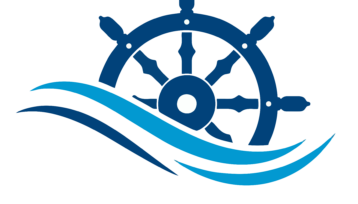Gas Engineer – Engine-Side
- Full time
- View on Map
- View(s) 387
Job Detail
-
Job ID 496
-
Offered Salary 1000
-
Experience 2 Years +
-
Gender Male
-
Industry Marine Engine-Side
-
Qualifications Certificate
Job Description
As a Gas Engineer in the Engine section, your main responsibility is to ensure the safe and efficient operation of gas propulsion systems and related equipment on board the vessel. You will work closely with the Chief Engineer and other engineering personnel to maintain and repair gas engines and associated systems. Here is a detailed job description for the position of Gas Engineer in the Engine section:
1. Operation and Maintenance of Gas Propulsion Systems:
– Operate, monitor, and control gas propulsion systems, including gas engines, gas compressors, and associated equipment.
– Conduct routine checks on gas engines and related systems to ensure proper functioning and performance.
– Monitor and maintain gas supply, pressure, and storage systems as per operational requirements.
– Follow operational procedures and safety protocols for the safe and efficient operation of gas propulsion systems.
2. Repairs and Troubleshooting:
– Identify and diagnose faults or malfunctions in gas engines and associated systems.
– Carry out repairs, replacements, or adjustments to faulty components or systems.
– Collaborate with the engineering team to troubleshoot and rectify gas engine-related issues.
– Coordinate with external contractors or suppliers for specialized repairs or spare parts procurement.
3. Preventive Maintenance:
– Develop and implement a preventive maintenance program for gas engines and related equipment.
– Conduct regular inspections, servicing, and maintenance tasks to ensure optimal performance and reliability.
– Keep accurate records of maintenance activities, including servicing, repairs, and component replacements.
– Monitor equipment performance and efficiency, making recommendations for improvements or upgrades.
4. Safety and Compliance:
– Adhere to safety procedures and regulations while working on gas propulsion systems.
– Ensure compliance with industry standards and guidelines for the safe handling and storage of gas.
– Participate in safety drills, inspections, and audits to maintain a safe working environment.
– Identify and report potential hazards or safety concerns to the Chief Engineer.
5. Documentation and Reporting:
– Maintain accurate records of gas propulsion system performance, maintenance activities, and spare parts inventory.
– Prepare reports on maintenance and repair work, gas consumption, and equipment condition.
– Update technical documentation, drawings, and manuals to reflect modifications or upgrades.
6. Training and Development:
– Stay updated with the latest technologies and industry best practices in gas propulsion systems.
– Participate in training programs to enhance technical skills and knowledge related to gas engines.
– Share knowledge and provide guidance to junior engineering staff regarding gas propulsion systems.
7. Collaboration and Communication:
– Collaborate effectively with other engineering personnel and departments to ensure smooth vessel operations.
– Communicate with suppliers, contractors, and manufacturers regarding technical matters and spare parts procurement.
– Foster a positive working environment and maintain effective teamwork within the engine room.
Requirements:
– Valid Certificate of Competency (COC) as per STCW requirements for Engineer Officer.
– Relevant sea time experience as an engineer officer on vessels with gas propulsion systems.
– Strong knowledge of gas engines, gas compressors, and related systems.
– Familiarity with gas storage and handling procedures, including safety protocols.
– Proficiency in troubleshooting and repairing gas engines and associated equipment.
– Basic understanding of electrical and electronic systems relevant to gas propulsion.
– Effective communication skills and the ability to work well within a team.
Please note that the specific job responsibilities and requirements for a Gas Engineer may vary depending on the type and size of the vessel, company policies, and trading area. Additionally, certification requirements and regulations may vary between countries and flag states.

